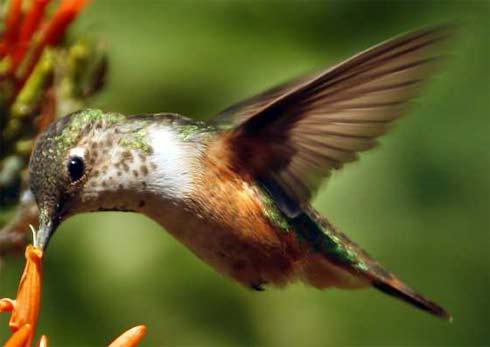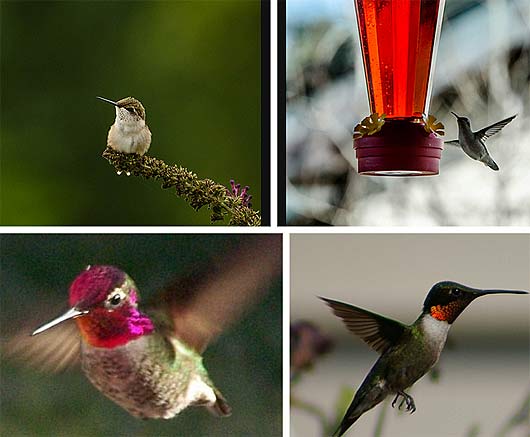Hummingbirds

Hummingbirds are quite unique and different from other types and species of bird. This uniqueness has sparked some fantastical myths and rumors about them, which for the most part are untrue. Queen Isabella of Spain was once told that hummingbirds are the result of a mating between a bird and an insect!
There are several hundred different species of hummingbird, all of which can hover in mid-air at the heads of flowers so that they can gather the nectar from within. They are also the only species of bird which can fly backwards. Flexible shoulder joints and deft wing movements help them master airborne maneuvering.
To be able to hover in the air in this way their wings need to beat extremely quickly. This gives them the appearance of being perfectly still, and they look like they are suspended in mid-air.

It is this rapid beating of the wings which has given them their name. The speed at which the wings beat creates a humming sound, hence the name “hummingbird”. Oddly the larger and heavier the bird is, the slower the wings need to beat. For example, the largest of the hummingbirds, aptly named the “giant hummingbird” beats it’s wings around ten times per second. The smallest species, the “bee hummingbird”, which is also the smallest bird of all bird species, has a wing speed of about ninety beats per second.
It is necessary for hummingbirds to be able to spend so much time at the heads of flowers because they have to consume so much nectar to survive. They have extremely fast rate of metabolism and need to consume a massive five times their own body weight in nectar every day. They have very sweet teeth and the sweeter the nectar is, the better. In fact, they will not drink nectar which has a sugar content of less than ten percent. They supplement this sweet syrupy diet by catching small insects which provide them with the protein and other nutrients they need.

